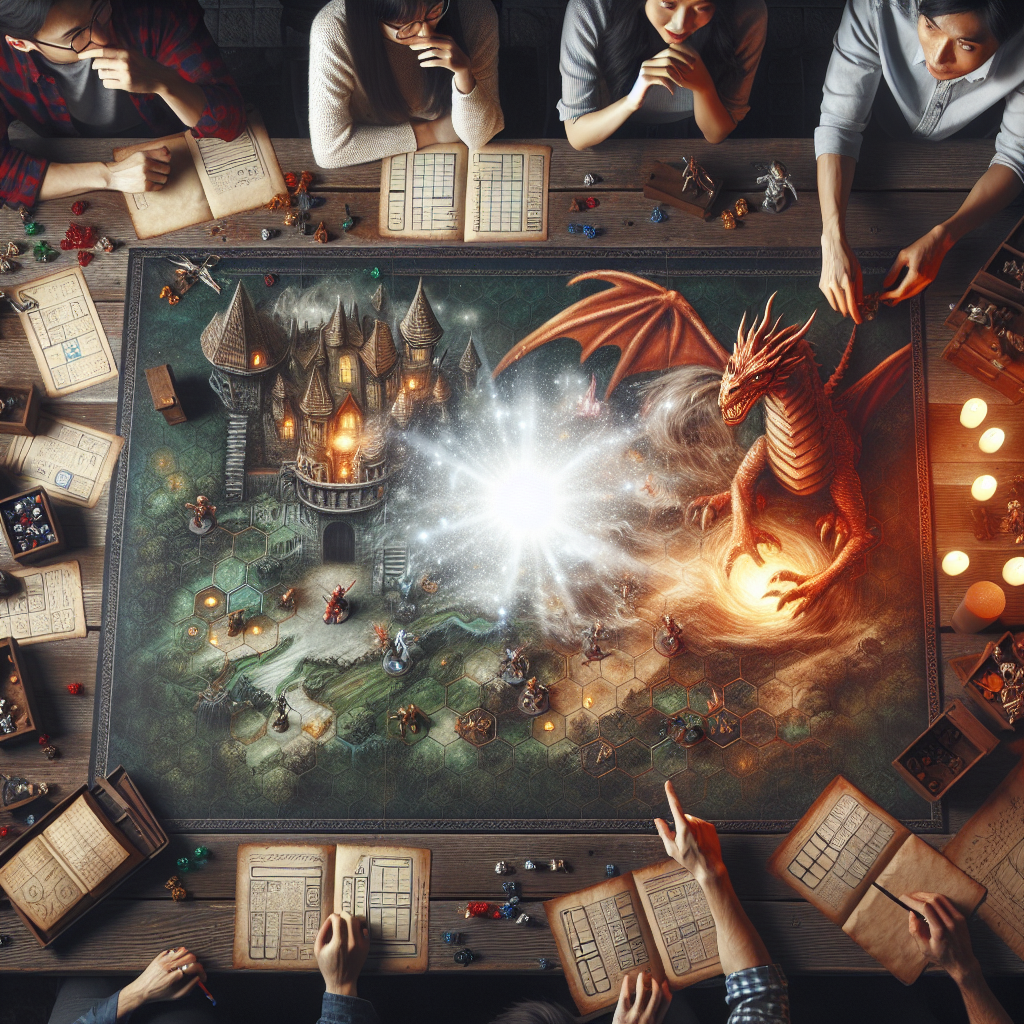Unleashing Creativity: How Dungeons and Dragons Board Games Fuel Imagination
In an age where digital distractions dominate leisure time, the timeless allure of tabletop games continues to captivate audiences around the world. Among these, Dungeons & Dragons (D&D) stands as a paragon of imagination and creativity, breathing life into a generation of players who revel in collaborative storytelling, problem-solving, and fantastical adventure. But what is it about D&D that fuels the creative engines of its players? This article explores the many ways in which Dungeons & Dragons board games unleash creativity and foster imaginative thinking.
The Power of Collaborative Storytelling
At the heart of Dungeons & Dragons lies collaborative storytelling. The game invites players to collectively create a rich narrative filled with vibrant characters, intricate plots, and unexpected twists. Unlike traditional board games with fixed outcomes, D&D offers infinite possibilities, allowing players to chart their own courses through a shared universe.
The Dungeon Master (DM) assumes the role of storyteller, crafting the world and guiding the players through quests. However, each player contributes to the narrative, influencing outcomes through their character’s actions and decisions. This collaborative effort taps into the imaginations of all participants, encouraging them to think creatively about the choices they make and the stories they tell.
Character Development: A Canvas for Imagination
Creating a character in D&D is akin to writing a mini-biography. Players invest time in developing their characters’ backgrounds, motivations, and personalities. This process encourages self-exploration and introspection as players consider how their fictional counterparts navigate challenges and moral dilemmas.
From choosing a class and race to writing backstories and creating unique quirks, character development becomes a canvas for personal expression. For many, this exploration opens doors to new facets of creativity, enabling them to envision lives and experiences far removed from their own while fostering empathy and understanding.
Worldbuilding: A Limitless Landscape
One of the most compelling aspects of Dungeons & Dragons is the concept of worldbuilding. DMs curate rich settings that are often steeped in lore and history, yet players are encouraged to contribute to this tapestry by introducing their own ideas and elements. From unique locations to cultures, deities, and ancient civilizations, the creative input of every player helps shape and expand the game world.
This collaborative approach allows for an ever-evolving landscape that reflects the players’ imaginations. The act of worldbuilding not only sparks ingenuity but also stimulates critical thinking, as players must consider how different characters, settings, and events interact within a larger narrative framework.
Problem-Solving and Strategic Thinking
Dungeons & Dragons is not solely about storytelling; it demands strategic thinking and problem-solving skills. Players frequently encounter challenges—be they puzzles, combat scenarios, or social confrontations—and must work together to devise creative solutions. These moments of collaboration encourage players to think outside the box, brainstorming potential strategies that leverage their characters’ unique abilities and resources.
This aspect of gameplay translates to real-world skills; by fostering teamwork and encouraging innovative problem-solving, D&D cultivates a mindset that embraces creativity in everyday life, nudging players to view obstacles as opportunities for imaginative resolution.
Embracing Failure and Growth
In a world increasingly fearful of failure, Dungeons & Dragons promotes a healthy relationship with setbacks. The game mechanics often involve risk, and characters may face defeat or setbacks during their adventures. However, these moments can be incredibly liberating; players learn that mistakes are part of the journey and can lead to unexpected and exciting narrative developments.
This attitude nurtures resilience and adaptability, teaching players to embrace creativity not just in triumph but also in the face of failure. When players understand that every twist and turn can contribute to a richer story, they become more willing to experiment with their ideas and push imaginative boundaries.
Conclusion
Dungeons & Dragons is much more than a board game; it is a powerful tool for fostering creativity, collaboration, and critical thinking. Whether through storytelling, character development, worldbuilding, or strategic problem-solving, D&D provides an immersive experience that encourages players to unleash their imaginations. As the popularity of tabletop games continues to grow, they offer a vital space for individuals to explore their creativity and connect with others—a testament to the enduring power of storytelling and the boundless potential of the human imagination. In a world where creativity is more important than ever, Dungeons & Dragons remains a beacon of inspiration, lighting the way for adventurers to venture into realms of endless possibilities.




